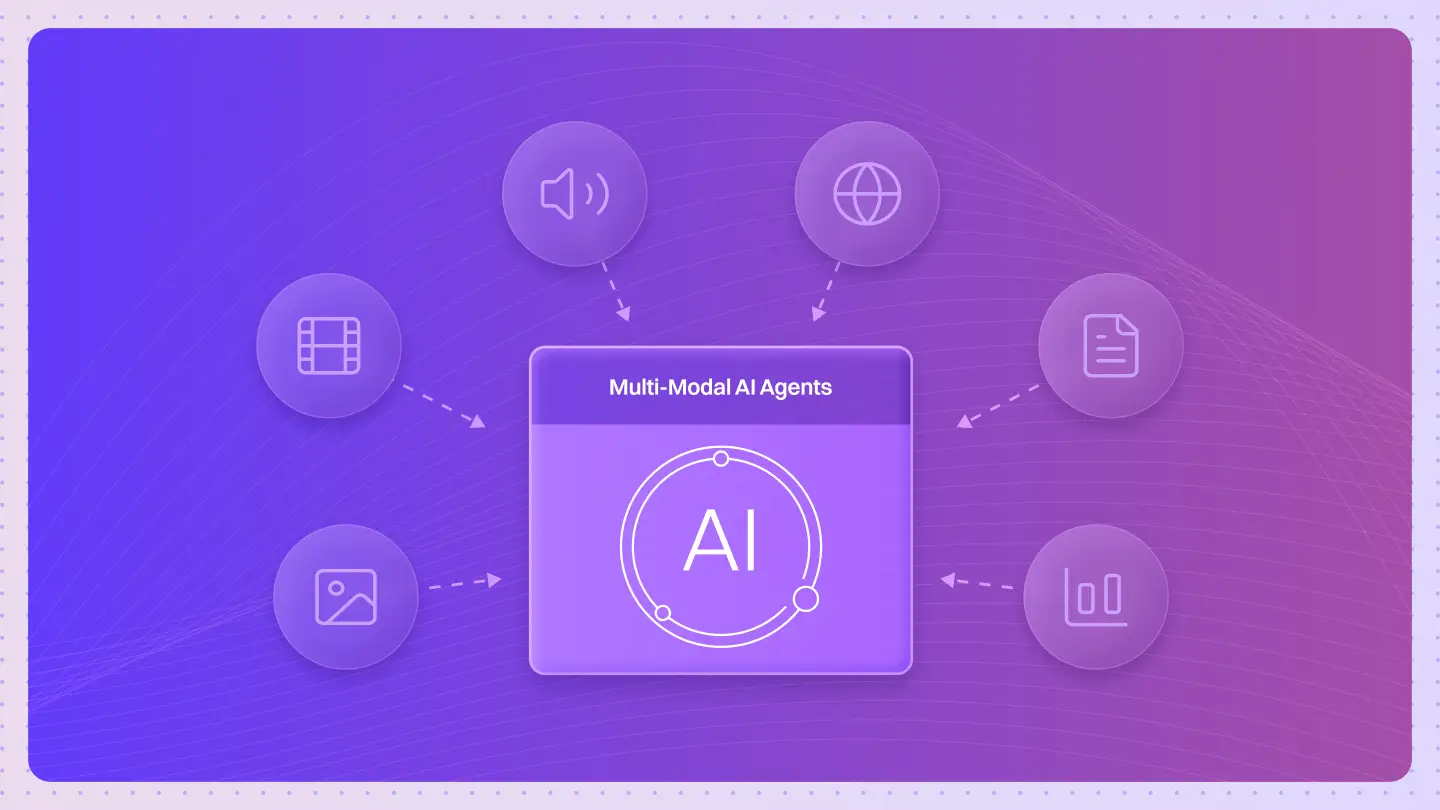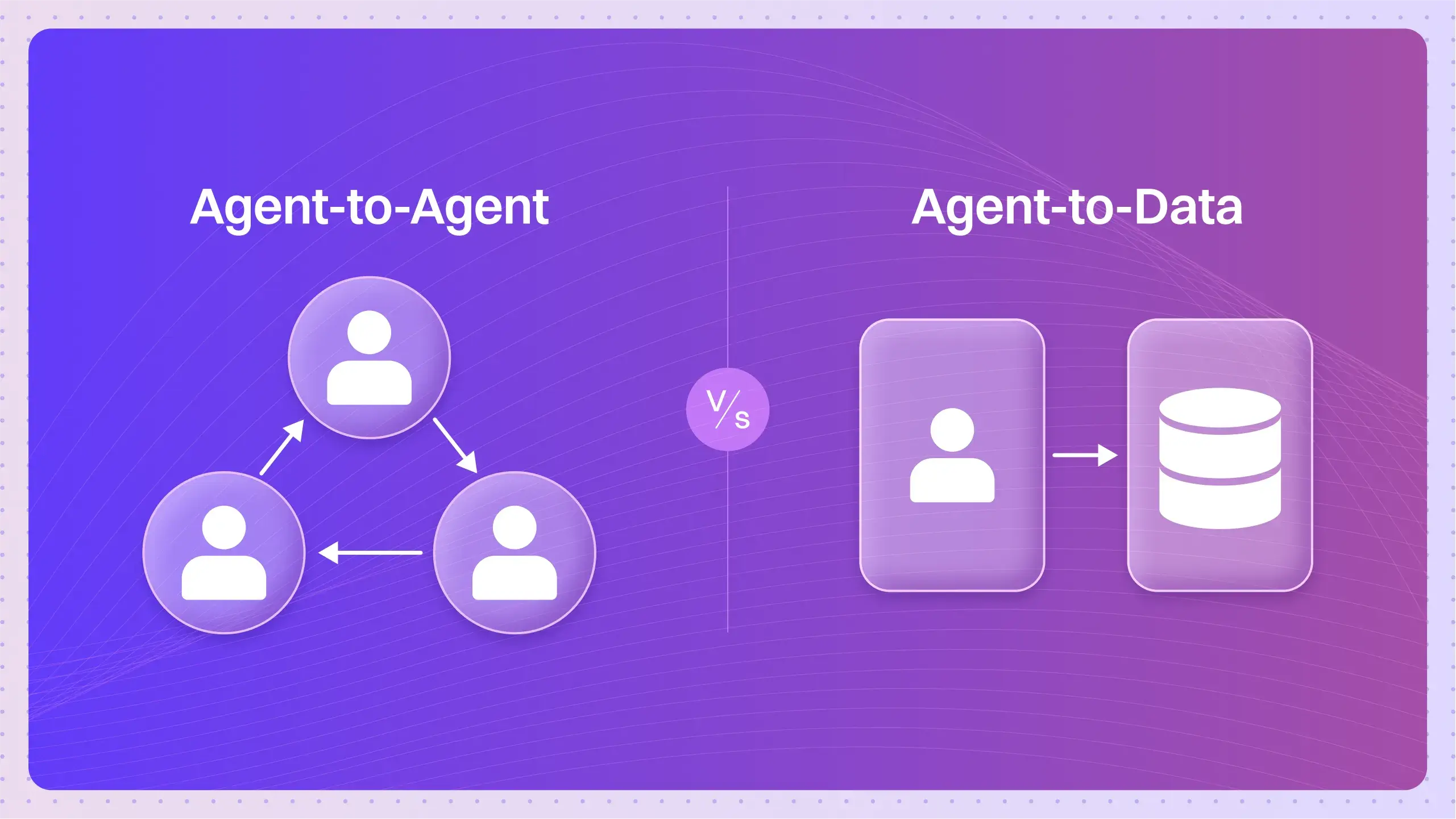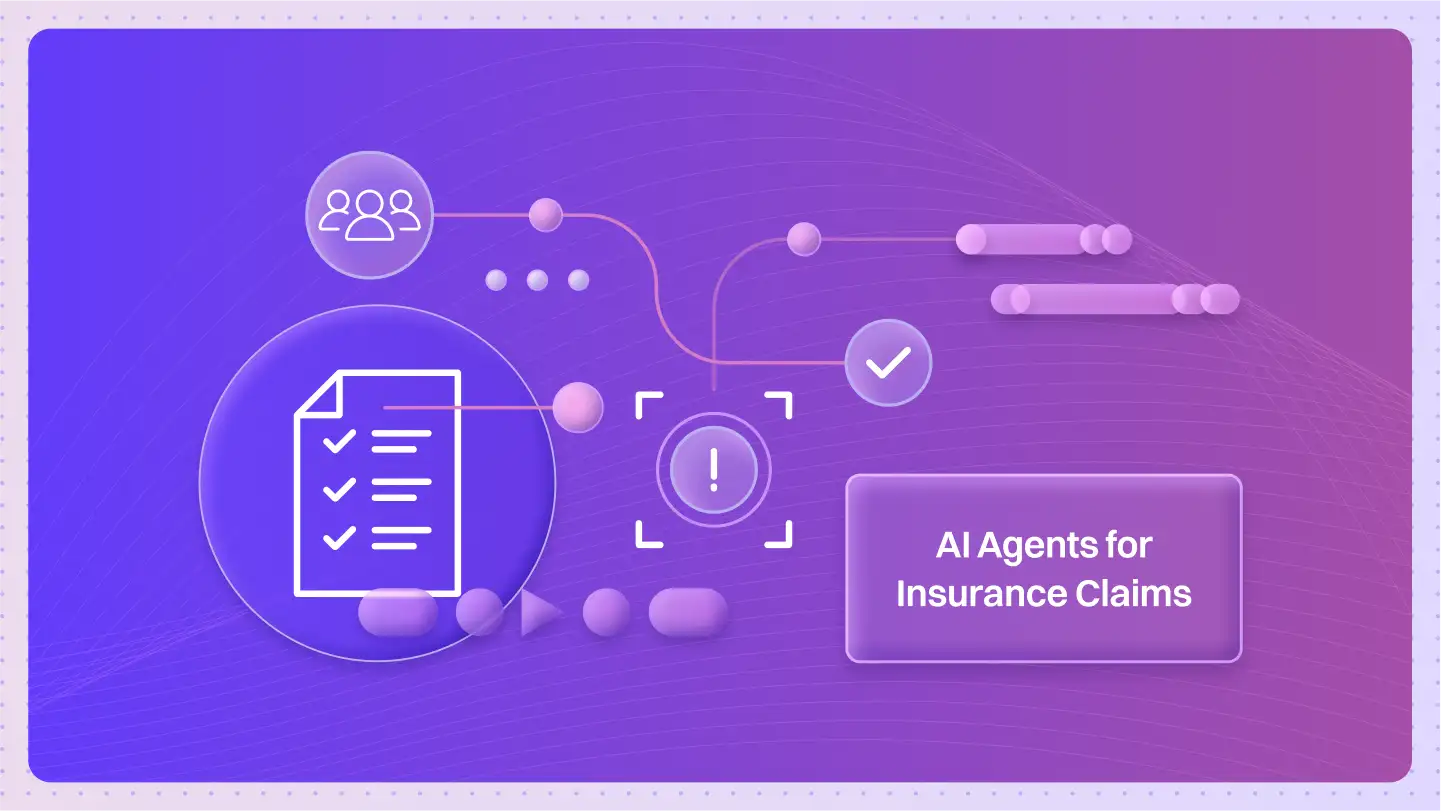Table of Contents
ToggleYou might have come across a situation where your customer service team is drowning in tickets, your marketing campaigns feel disconnected, and your employees are juggling five different tools just to complete one simple task.
It’s like trying to solve a jigsaw puzzle while blindfolded, you have all the pieces, but they’re scattered across different platforms, formats, and systems.
This is the reality for most business leaders today. The only way to overcome this is to use Multi-Modal Agents. So, what are Multi-Modal AI Agents?
They’re the game-changing solution that can finally connect these scattered pieces into a cohesive, intelligent system.
Multimodal AI concept diagram showing data integration from multiple sources
The Setup: Why Traditional AI Falls Short
Most businesses today are stuck in a single-modal world. Your chatbot handles text. Your voice assistant processes speech. Your image recognition tool analyzes pictures. But what happens when your customers communicate through multiple channels simultaneously?
78% of businesses now use AI in at least one function, yet most still struggle with fragmented experiences and workflow inefficiencies. Traditional AI systems are like skilled specialists who excel in their narrow domains but can’t collaborate effectively.
Visualization of workflow inefficiencies and data silos in modern enterprises
Understanding Single Modal Limitations
Single modal AI agents process at specific tasks but are terrible at understanding context across different formats.
Think of them as highly skilled musicians who can only play solo, impressive individually, but lacking the harmony needed for a symphony.
But wait, there’s more, the problem goes deeper than just technical limitations.
Workflow Inefficiency: The Silent Productivity Killer
Your teams are spending 6+ hours daily on low-value tasks like data entry, system switching, and manual information gathering. CTOs report that 85% of AI projects fail to move beyond proof-of-concept, largely due to integration nightmares and fragmented systems.
HR managers face a different nightmare. 96% of HR professionals plan to use AI, but 36% fail because they lack the right skills to manage integration projects. The result? Expensive tools that sit unused while employees remain overwhelmed.
Here’s what’s really happening:
| Feature | Single Modal AI Agents | Multimodal AI Agents |
| Data Processing Capability | Processes one data type only (text, image, or audio) | Processes multiple data types simultaneously |
| Contextual Understanding | Limited to single data stream context | Rich cross-modal context understanding |
| Implementation Complexity | Lower complexity, easier deployment | Higher complexity, advanced architecture required |
| Accuracy Level | High accuracy within specific domain | Enhanced accuracy through data cross-referencing |
| Resource Requirements | Lower computational demands | Higher resource demands for data integration |
| Use Case Flexibility | Specialized for specific tasks only | Adapts to diverse and complex scenarios |
| Integration Challenges | Simpler integration process | Complex but comprehensive integration |
| Cost Effectiveness | More cost-effective initially | Higher ROI through versatile applications |
Customer Engagement Crisis
CMOs are under enormous pressure. 72% of executives plan to integrate AI, but customer engagement remains frustratingly disconnected. Your customers expect seamless experiences across text, voice, images, and video but your systems can’t deliver.
You might be wondering: How can businesses break free from this cycle?
Customer engagement challenges in traditional business systems
The answer lies in understanding what multimodal AI agents truly offer.
The Resolution: What are Multi-Modal AI Agents and How They Transform Business
Multi-Modal AI Agents are intelligent systems that process and understand multiple types of data simultaneously from text, images, audio, video to sensor data, creating unified, contextually aware responses that mirror human-like comprehension.
Think of them as orchestra conductors who can simultaneously hear every instrument, understand the music’s emotional context, and coordinate a harmonious performance. They don’t just process information; they synthesize it into intelligent action.
The Multimodal Advantage
Unlike traditional AI, multimodal agents integrate diverse data streams to create richer understanding. When a customer sends a support ticket with text description and screenshots, these agents analyze both simultaneously, providing more accurate and contextual responses.
Here’s the game-changing part: The global multimodal AI market is exploding, growing from $1.83 billion in 2024 to a projected $42.38 billion by 2034 that’s a staggering 36.92% compound annual growth rate.
Global Multimodal AI Market Growth Projection showing exponential growth from $1.83 billion in 2024 to $42.38 billion by 2034
Real-World Applications That Matter
For HR Managers:
- Automated recruitment that analyzes resumes, interview videos, and assessment results simultaneously
- Employee sentiment analysis combining survey responses, voice patterns, and behavioral data
- Training personalization adapting to learning styles through multiple input channels
For CTOs:
- Unified system integration eliminating data silos and reducing technical debt
- Predictive maintenance combining sensor data, images, and historical records
- Security monitoring analyzing multiple threat vectors simultaneously
For CMOs:
- Hyper-personalized campaigns leveraging customer behavior, preferences, and interaction history
- Content optimization analyzing text performance, visual engagement, and audio feedback
- Real-time sentiment tracking across all customer touchpoints
100+ Real-world AI Agent Use Cases
But here’s where it gets really interesting…
The Lyzr AI Advantage
Lyzr AI represents the next evolution in multimodal agent development. Their platform enables enterprises to build fully autonomous AI agents that run locally on your cloud server, ensuring 100% data privacy and compliance.
What sets Lyzr apart is their enterprise-grade approach:
- Safe AI integration with responsible AI guardrails built into the core architecture
- Multi-agent orchestration enabling complex workflow automation
- 24/7 enterprise support with 30-minute response SLAs
- No-code to full-code flexibility empowering both technical and business users
The platform supports everything from chatbots and knowledge search to advanced data analysis and voice agents, all with multimodal capabilities that understand context across different data types.
You’re probably thinking: This sounds too good to be true.
Overcoming Implementation Challenges
Smart business leaders know that powerful technology comes with implementation challenges. Here’s how successful organizations are tackling them:
Data Quality and Integration:
- Start with hybrid workflows combining AI suggestions with human oversight
- Implement progressive data governance frameworks
- Choose platforms like Lyzr that offer white-glove onboarding support
Skills and Change Management:
- Invest in cross-functional training programs
- Partner with experienced providers offering 24/7 technical support
- Begin with pilot projects that demonstrate quick wins
Cost and ROI Concerns:
- Focus on use cases with measurable impact like customer service automation
- Leverage locally deployable solutions to reduce ongoing operational costs
- Choose platforms with transparent pricing models avoiding hidden API costs
But wait, there’s more value to uncover…
Measuring Success: KPIs That Matter
Successful multimodal AI implementation delivers measurable results:
- Workflow efficiency: Reduction in manual task time by 4x or more
- Customer satisfaction: Improved response accuracy and faster resolution times
- Employee productivity: Time savings of 160+ hours per project in content creation
- Revenue impact: Enhanced cross-selling and upselling through better customer insights
The evidence is clear: Organizations using multimodal AI in multiple business functions see 35% greater efficiency gains compared to single-modal implementations.
Here’s the bottom line…
The Future is Multimodal: Your Next Steps
What are Multi-Modal AI Agents? They’re not just the future of business automation, they’re the present reality for forward-thinking organizations. The market is growing at 36.92% CAGR because these systems solve real problems that traditional AI cannot address.
The question isn’t whether you should adopt multimodal AI, it’s how quickly you can implement it before your competitors gain an insurmountable advantage.
Smart leaders are already making the transition. 72% of businesses now use AI in at least one function, but the winners will be those who embrace multimodal capabilities that truly understand and respond to the complexity of modern business challenges.
Your customers expect seamless, intelligent interactions across all touchpoints. Your employees deserve tools that enhance rather than complicate their workflows. Your business needs solutions that integrate rather than fragment your operations.
Use Multimodal Agents and transform your scattered business processes into a unified, intelligent system that works as harmoniously as a well-conducted orchestra. The technology is ready. The market is growing. The only question is: Will you lead the transformation or follow it?
Want to start building? Start here
Book A Demo: Click Here
Join our Slack: Click Here
Link to our GitHub: Click Here




